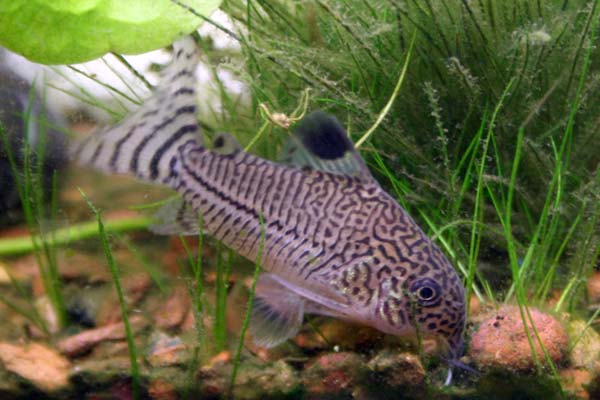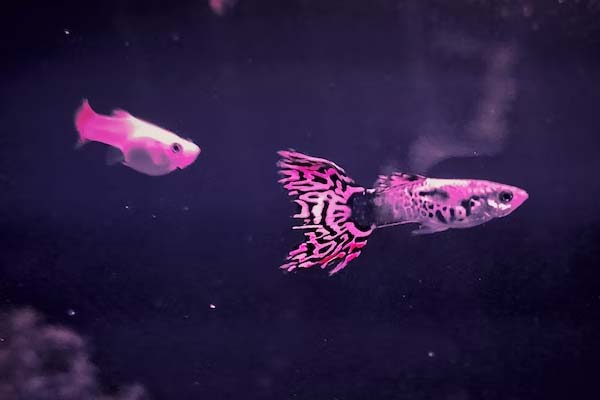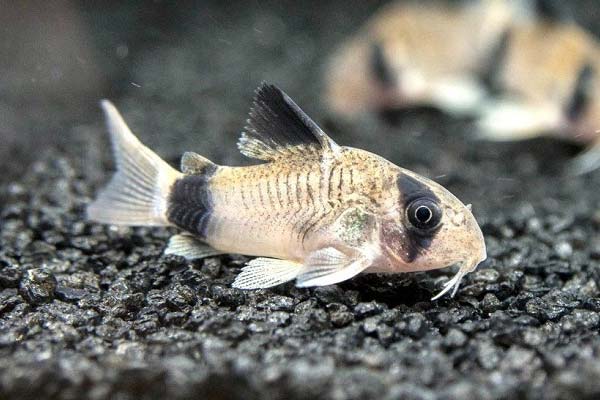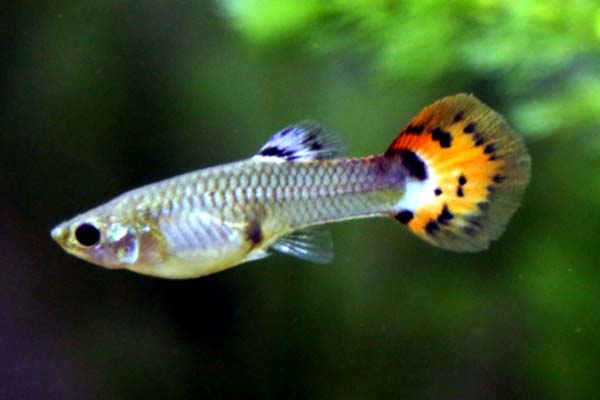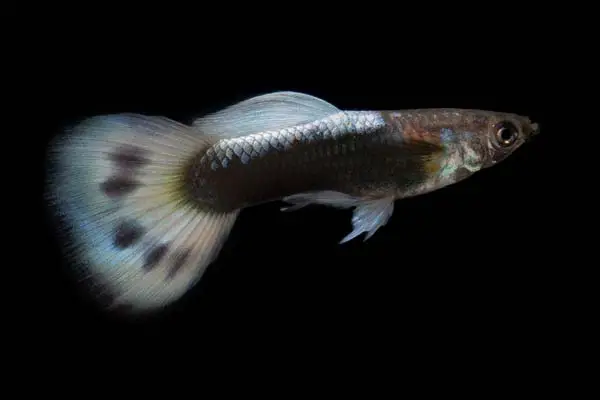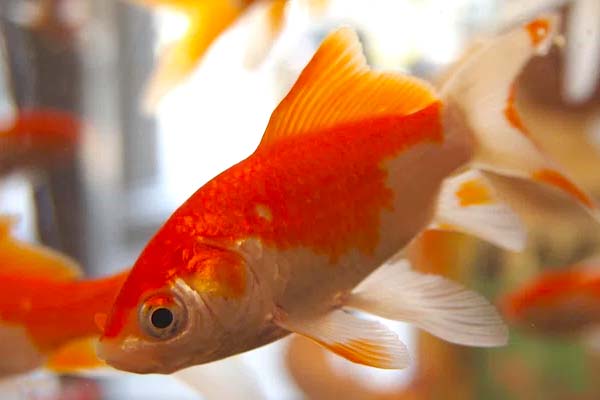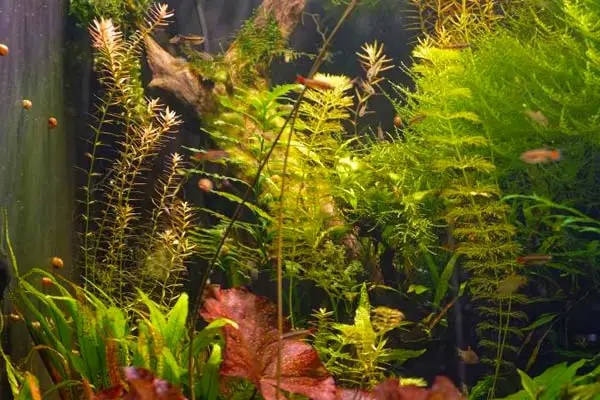Do Cory Catfish Eat Algae? Exploring the Algae-Eating Habits of Cory Catfish
Cory catfish are a popular addition to many aquariums due to their peaceful nature and unique appearance. However, many aquarium enthusiasts wonder if these fish are effective algae eaters. The answer is not straightforward, but cory catfish are not primarily algae eaters.
Cory catfish are omnivores and eat a diet of meaty proteins, plant matter, algae, and general detritus. While they may nibble on algae from time to time, they are not considered to be effective algae eaters. They are more likely to scavenge for leftover food and other debris on the bottom of the tank.
That being said, cory catfish can still be a valuable addition to an aquarium for various reasons. They are peaceful and social fish that can coexist with various other species.
Additionally, they can help keep the tank clean by consuming uneaten food and other debris. While they may not be the most effective algae eaters, they are still an excellent choice for many aquarium enthusiasts.
Understanding Corydoras Catfish
Corydoras catfish, also known as cory catfish, is a popular freshwater fish native to South America. They are bottom dwellers and are adapted to scavenging for food on the substrate of their natural habitat.
Characteristics, Behavior, and Compatibility
Corydoras catfish are characterized by their barbels, sensory organs that locate food on the substrate. They are generally small, ranging from 1 to 3 inches in length. Corydoras catfish are known for their peaceful and shy nature, making them a great addition to any community tank.
Corydoras catfish are bottom feeders and will scavenge for food on the substrate. They are not algae eaters but will eat sinking algae wafers if provided. Corydoras catfish are also known for their ability to clean up leftover food and other debris on the substrate, making them a helpful addition to any freshwater aquarium.
Corydoras catfish are compatible with a wide variety of freshwater fish as long as they are not aggressive or overly territorial. They do best in groups of 4 or more, as they are social animals and prefer to be in the company of their own kind.
Care
Corydoras catfish thrive in freshwater aquariums with minimal care requirements. They are adaptable to a pH range between 6.5 and 7.5 and a temperature of 72 to 78 degrees Fahrenheit. Mimicking their natural habitat, they prefer a sand or fine gravel substrate.
Providing Corydoras catfish with hiding places in the aquarium, such as plants or decorations, is crucial as they are shy and like to have a place to retreat to.
In terms of feeding, Corydoras catfish require a varied diet of sinking pellets, frozen or live foods, and occasional algae wafers. It is important not to overfeed them, as they are prone to obesity.
Do Cory Catfish Eat Algae?
Cory catfish are popular aquarium fish for their peaceful nature and bottom-dwelling habits. One of the most common questions asked by aquarium enthusiasts is whether or not their Cory catfish will eat algae. The short answer is no; they do not eat algae that naturally grows in the aquarium walls or other decorations. However, they will eat sinking algae wafers if you feed them.
Types of Algae Consumed by Corydoras Catfish
Cory catfish are not considered effective algae eaters as they do not strongly prefer algae. They are bottom feeders and prefer to eat sinking pellets, flakes, and live or frozen foods. However, they can help to control some types of algae in the aquarium, such as:
- Brown algae
- Green spot algae
- Diatoms
Benefits of Corydoras Catfish as Algae Eaters
Although Cory catfish are not the best algae eaters, they offer other benefits to the aquarium ecosystem. They are excellent scavengers and will eat leftover food and other organic matter that has fallen to the bottom of the tank. This helps to keep the tank clean and reduces the amount of waste that can build up in the substrate.
Cory catfish are naturally social and should be kept in groups of at least three to five individuals. They exhibit peaceful behavior and can coexist harmoniously with other fish species, making them an excellent choice for community tanks.
Corydoras Catfish Diet
Corydoras catfish have an omnivorous diet, meaning they eat plant- and animal-based foods. In the wild, their diet consists of various tiny organisms like insects, crustaceans, worms, algae, and plant matter. When kept in captivity, providing them with a balanced diet that fulfills their nutritional needs is crucial.
Fish Food
Regarding feeding corydoras catfish, various options are available, including fish flakes, pellets, and frozen foods. It’s essential to choose a high-quality fish food that contains all the necessary nutrients, such as protein, vitamins, and minerals.
Algae Wafers
While corydoras catfish are not known for eating algae, they may occasionally nibble on it. Algae wafers can be an excellent addition to their diet, providing additional nutrients and fiber. However, feeding them small amounts of algae wafers is essential, as too much can cause digestive issues.
Frozen Food
Frozen foods like bloodworms and krill can also be an excellent addition to a corydoras catfish’s diet. These foods are high in protein and can provide a variety of nutrients. Freeze-dried bloodworms can also be a good option, but it’s essential to soak them in water before feeding to prevent digestive issues.
Bottom Feeder Pellets
Bottom feeder pellets are an excellent choice for corydoras catfish as they sink to the bottom of the tank, allowing the catfish to feed comfortably. These pellets are specially formulated to provide a high protein content and a variety of essential nutrients, including vitamins and minerals. They offer a well-balanced diet to meet the dietary requirements of corydoras catfish.
Vegetables
Adding some vegetables to the diet of Corydoras catfish can be beneficial. Occasionally blanched vegetables like zucchini or cucumber provides them with fiber and essential nutrients. Small amounts of vegetables are necessary to prevent any potential digestive issues from overfeeding.
Alternative Algae-Eater Options
Although cory catfish may not be the most efficient algae eaters, several other fish and invertebrates can effectively control algae growth in your aquarium.
Bristlenose Pleco
Bristlenose plecos are among the most popular algae-eating fish in the aquarium hobby. They are hardy, easy to care for, and can consume various algae types. Bristlenose plecos are also known for their unique appearance, with a flattened body and bristly nose.
Otocinclus Catfish
Otocinclus catfish, commonly called dwarf suckers, are highly regarded for their algae-eating capabilities. These small and peaceful catfish species are adept at consuming various types of algae, including diatoms and green algae. Their playful behavior and compatibility with other fish make them an excellent addition to a community tank focused on algae control.
Cherry Shrimp
Cherry shrimp are freshwater shrimp that offer effective algae control in aquariums. These low-maintenance creatures can consume different types of algae, including green algae and diatoms. Additionally, their vibrant red coloration adds a visually appealing touch to your tank, enhancing its overall aesthetics.
Freshwater Aquatic Snails
Freshwater aquatic snails, such as nerite snails and mystery snails, serve as effective algae controllers in aquariums. These low-maintenance snails can effectively consume different types of algae, including diatoms and green algae. Additionally, they contribute to the tank’s cleanliness by consuming uneaten food and other debris, helping to maintain a healthy and balanced ecosystem.
Flying Fox Fish
Flying fox fish, known as Siamese algae eaters, are famous for controlling algae growth in aquariums. These fish are peaceful and can consume various algae types, including green algae and diatoms. They are also known for their unique appearance, silver body, and black stripes.
Florida Flag Fish
Florida flag fish, a type of killifish, is an excellent choice for controlling algae growth in your aquarium. These resilient fish have a voracious appetite for different types of algae, including green algae and diatoms. Their distinctive appearance, featuring a yellow body adorned with black stripes, adds an intriguing visual element to your aquarium.
Twig Catfish
Twig catfish are a unique and exciting addition to any aquarium. These fish are peaceful and can consume a variety of algae types, including green algae and diatoms. They are also known for their slender body shape and ability to blend in with their surroundings.
Considerations for Choosing Algae-Eating Tankmates
When considering algae-eating tankmates for cory catfish, there are a few factors to keep in mind. It’s important to choose fish compatible with your cory catfish and to maintain a balanced population of algae-eating fish in your aquarium.
Factors to Consider When Selecting Algae-Eating Tankmates
Some of the factors to consider when selecting algae-eating tankmates include the following:
- Compatibility of algae-eating fish species
- Tank size
- Substrate and decorations
- Lighting conditions
- Overfeeding
- Algae problem prevention
Compatibility of Algae-Eating Fish Species
When selecting algae-eating tankmates for your cory catfish, it’s crucial to choose peaceful and friendly fish that won’t harass or harm your cory catfish. Some good options for tankmates include tropical sinking wafers, scavengers, and other catfish species.
Balancing the Algae-Eating Population in the Aquarium
Maintaining a balanced population of algae-eating fish in your aquarium is crucial. Too many algae-eating fish can lead to overfeeding and poor water quality, while too few can result in an overgrowth of algae. It’s essential to monitor your aquarium regularly and adjust the population of algae-eating fish as needed.
Tank Size and Substrate
Cory catfish and their tankmates require a minimum tank size of 20 gallons. Providing enough space for your fish to swim and explore is essential. The substrate and decorations in your aquarium can also affect algae growth. Gravel can trap debris and contribute to algae growth, while live plants can help prevent algae growth by absorbing excess nutrients.
Lighting Conditions
Direct sunlight can promote algae growth in your aquarium. It’s essential to place your aquarium away from direct sunlight and to use appropriate lighting conditions for your fish and plants.
Overfeeding
Avoiding overfeeding your fish is crucial to prevent algae growth in your aquarium. It is essential to provide them with only the amount of food they can consume within a few minutes and promptly remove any uneaten food from the tank. This practice helps to maintain water quality and minimize the accumulation of excess nutrients that can fuel algae growth.
Algae Problem Prevention
Preventing algae growth in your aquarium is the best way to avoid algae problems. Regular water changes, proper filtration, and a balanced population of algae-eating fish can all help prevent algae growth in your freshwater tank or pond.
Conclusion
In conclusion, while Cory Catfish are not avid algae eaters, they can still help keep the tank clean and control algae growth to some extent.
They scavenge for food and debris on the substrate and decorations and consume sinking algae wafers if provided. However, it is essential to avoid overfeeding them to prevent excess nutrients that can contribute to algae growth.
If algae growth becomes a persistent problem, adding other algae-eating fish like Otocinclus Catfish or Siamese Algae Eaters can be beneficial. Bristlenose Plecos and Twig Catfish are suitable options for larger tanks.
Live plants can also assist in reducing algae growth by competing for nutrients and providing oxygen. Maintaining proper lighting and substrate conditions is vital for the growth of these plants.
Regular water changes and tank cleaning prevent excess nutrients and control algae. Aim for 10-20% water changes weekly or bi-weekly, depending on the tank size and fish population.

